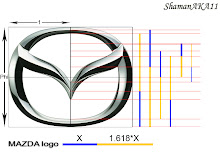Automotive 2013: Mixed Market Messages
In 2013, the US auto industry enjoyed the highest sales in years and this year is poised for growth as well. But not all brands enjoyed success, and some enjoyed success on only one of the two primary levers needed to drive sales (demand and conversion—Millward Brown Digital's hallmark metrics). Demand is measured by the number of in-market shoppers. These data are drawn from the sweet spot in the digital purchase funnel, below site traffic (too vague) but above leads (not representative of true market dynamics). Demand is based on observed, lower-funnel activity across multiple automotive websites and which leverages MBD's patented data-gathering and normalization processes to create a representative sample and avoiding false positives [1]. Let's take a look at 2013.
Demand Leaders
One component of sales success is in-market demand. On average in 2013, Ford, Chevrolet and Toyota had more in-market shoppers each month than did all other brands, with Ford leading the way at 592,000 shoppers. Acura rounded out the top 20 brands with 76,000. These are unique shoppers, meaning that a consumer that shops two models of the same brand is counted only once in brand totals. That also means the results vary by model and by the extent to which there is shopper overlap for vehicles in the same brand. Demand is only the potential for sales, however. For example, on average in 2013 Tesla had more shoppers than did Volvo and Jaguar and trailed Porsche by only a small margin (not shown), but its sales were much lower. Tesla sales were limited by limited inventory, a limited product line and fewer dealer points than most other brands.
Similarly, Subaru was #9 in terms of shoppers, but its sales ranked lower. Subaru for several years has had very tight inventories on most of its models, which means it can't turn all its shoppers into buyers [2].
Demand Growth Leaders
And speaking of Subaru, it ranked #3 in terms of the share of shoppers added y-o-y (left chart). Jaguar led all brands at 27%, followed by Jeep at 24%. Among the brands with the most shoppers, Toyota had the highest growth at 4%.
As noted above, consumer demand is only the potential for sales. The other side of the coin is how well brands convert shoppers into buyers. The 2013 conversion leader was GMC at 38%. Keep in mind that sales and conversion used in this analysis are total sales (retail + fleet/commercial) as reported by the automakers, while shoppers are predominately retail consumer. That means a brand with a substantial share of sales from fleet and/or commercial will see higher conversion than brands with a lower share, all else equal [3]. At the bottom of the conversion spectrum is Tesla, for reasons noted above.
Converting Potential to Actuals
The leading brands generally had conversion in the 30-35% range; the differentiator in terms of sales was each brand's volume of in-market shoppers. For full details, see page 4.
Shifting to 2014
In 2013, the automotive demand landscape was complex and far from uniform, and results even at the brand level show a variety of successes. Results at the model and monthly or weekly level are more insightful still, and are best when intertwined with other data, such as ad spend and brand health measures. For the rest of 2014, these are some of the right things to consider:
- Develop detailed plans for 2014 shopper volumes by model and by month
- Consider launch timings, including accelerated ad support as well as spillover demand from launches by rivals
- Evaluate whether planned ad spend by model is enough to reach demand levels needed to reach sales goals
- Consider share of voice relative to the market
- Given expected demand levels, benchmark conversion levels needed to reach sales goals
- Factor in how launches (yours and rivals') and other factors (such as gas prices, excess inventories, and sell-downs) will impact conversion trends
- Recognize that without the right combinations of demand and conversion, 2014 sales goals will be impossible to reach
[1] Representative of the US population but also representative of true new vehicle market dynamics, upstream and downstream.
[2] Of course, conversion can also be limited by uncompetitive incentives, and/or mix and allocation issues.
[3] Millward Brown Digital uses a brand's retail sales in our client-specific conversion analyses.
Lincoln Merrihew is the Vice President of Transportation at Millward Brown Digital. At Millward Brown Digital, Lincoln is responsible for steering the Transportation Team, which encompasses the automotive and travel practices. Before Lincoln joined the Millward Brown Digital team, he worked at TNS Custom leading the Automotive team, and then continued on there to lead business development for 10 different industry verticals. Lincoln's career aspiration is to create game-changing solutions and insights. Connect with Lincoln on LinkedIn. |
[Reported by Email from an iPad owned by Ralph Paglia]






No comments:
Post a Comment